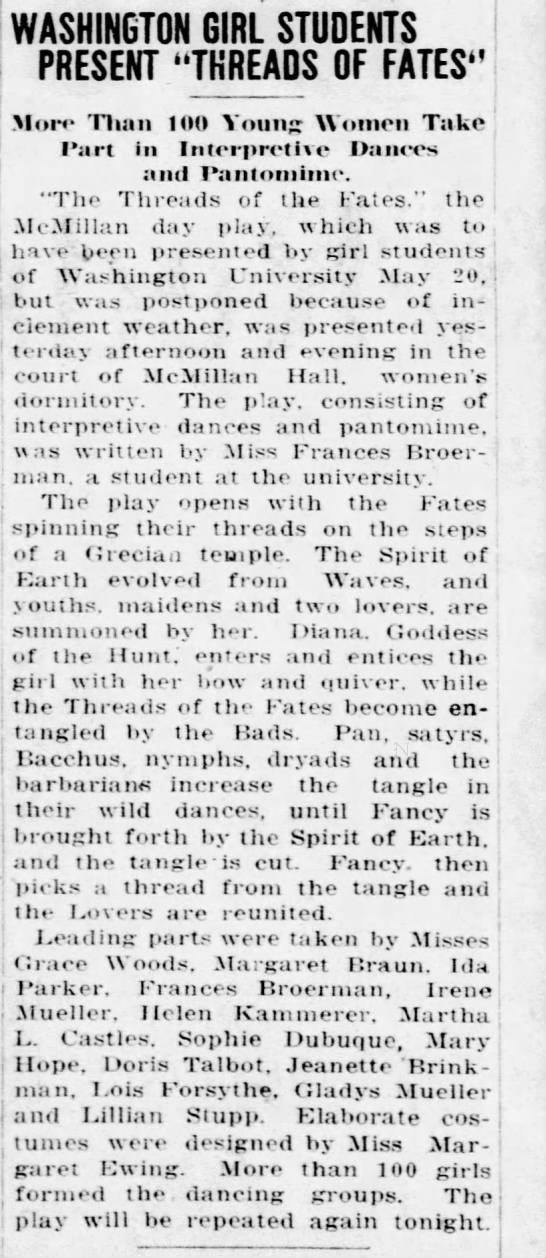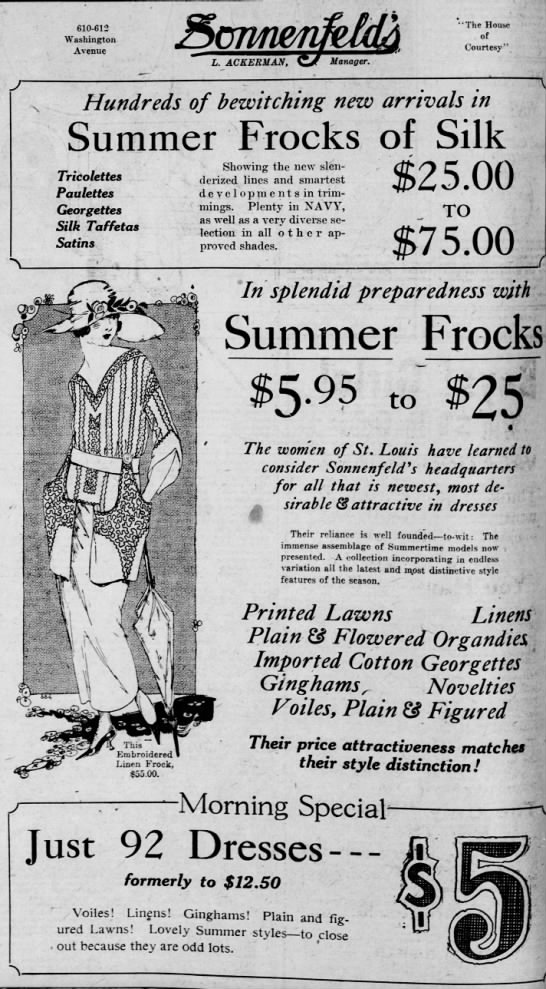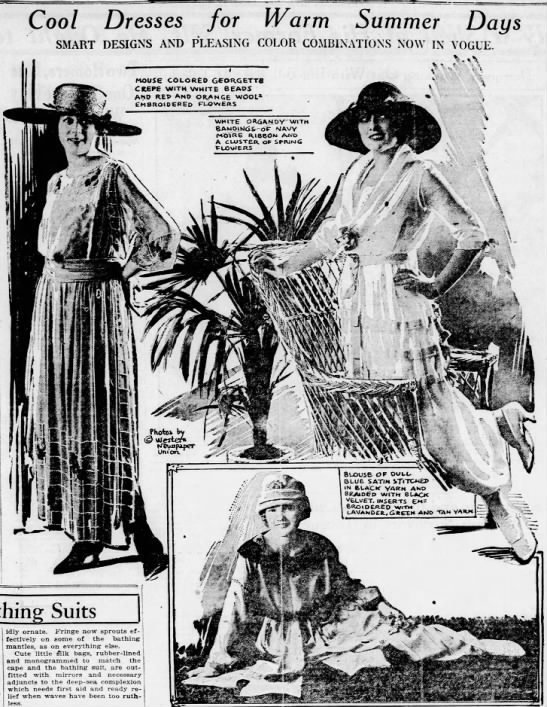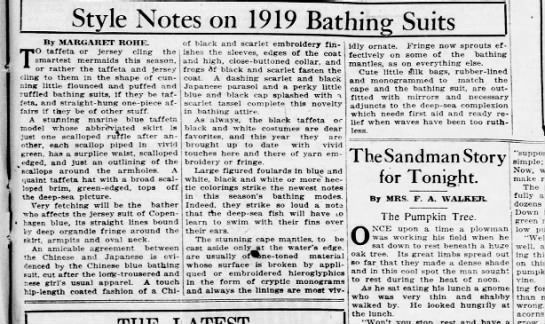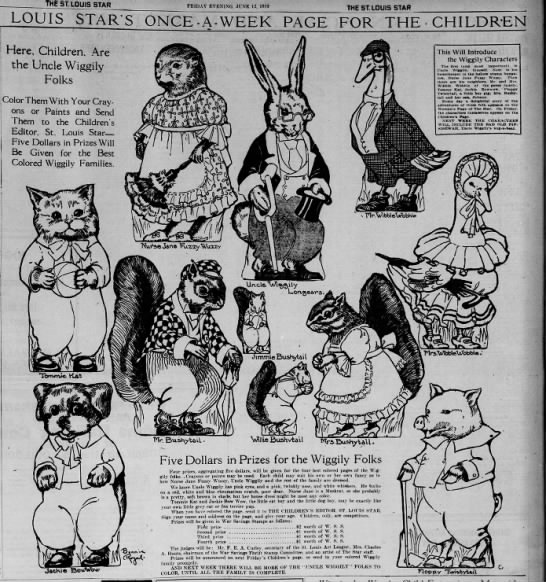100 years ago in St. Louis, MO, a Washington University student kept a diary. I found it in an antique shop in 2001. I was so taken by the author that I spent years researching her, her family, and the people and places she wrote about. This year I am sharing weekly posts from Helen Korngold's diary along with my research.
Helen's school days are over. The weather has turned hot. There isn't much to write about over the next weeks.
June
Monday 16
Haven’t recovered from effect of last night – Hope I get to sleep all afternoon.
Tuesday 17
Tired.
Wednesday 18
Picnic of Y.H.T.S.S. Highlands – Bernard Spiro came out in evening and took me riding on all the things & swimming & home. Had a dandy time. From now on will not be very full in my notes – too hot.
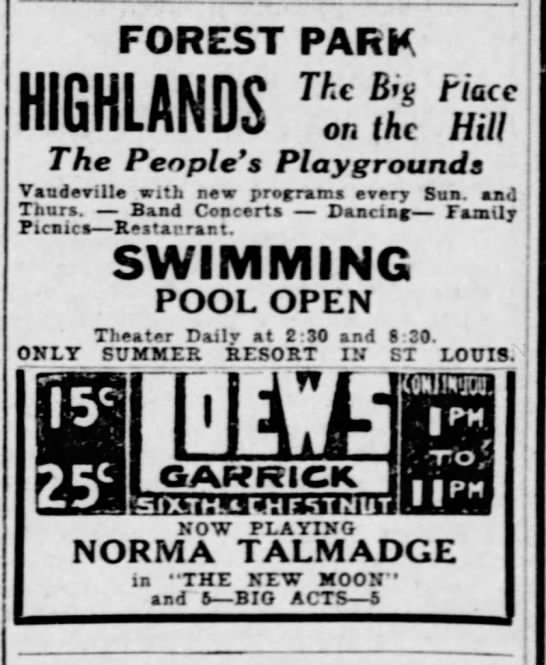 |
| June 18, 1919 ad from St. Louis Star |
Thursday 19
Tired. Slept 2 hrs.
Friday 20
Nothing exciting
Saturday 21
Downtown – lunch at Leader
Sunday 22
Nothing doing.
Notes:
June 18
YHTSS is likely her Sunday School class. A history of the movement for Jewish religious education patterned after the Christian Sunday School can be found here.
June 15
Forest Park Highlands was an amusement park located in St. Louis. It was the sight of the former St. Louis World's Fair and is today the site of The Forest Park Community College.
http://www.forestparkhighlands.com/
http://fox2now.com/2013/07/18/remembering-forest-park-highlands-amusement-park/
June 22
The Grand Leader Department Store tea room in downtown St. Louis. Learn more about its history here.
Read about the history of Stix, Bauer and Fuller, previously known as The Grand Leader, and the tea room here.
Other news this week in 1919:
The Uncle Wriggly Coloring Contest had a huge response!
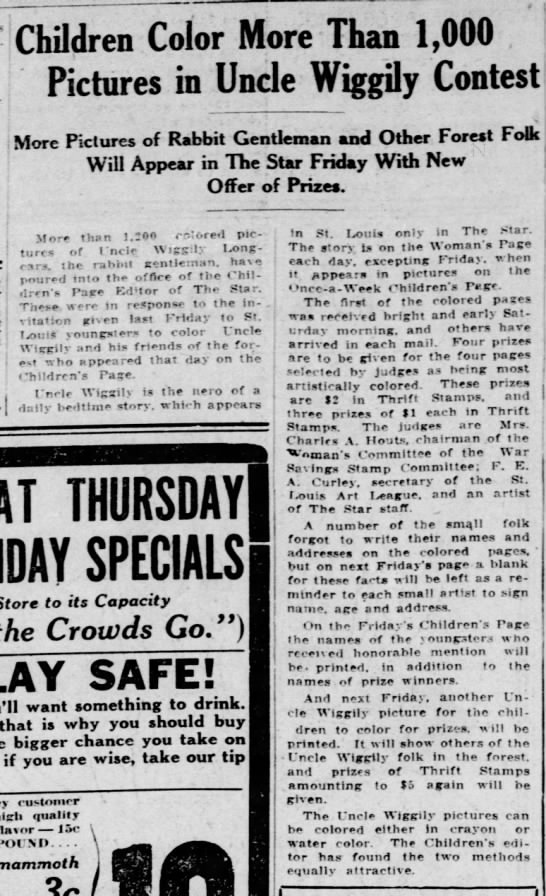 |
| June 18, 1919 St. Louis Star article |
Daylight Savings Time was controversial.

And so was the Mexican Border.
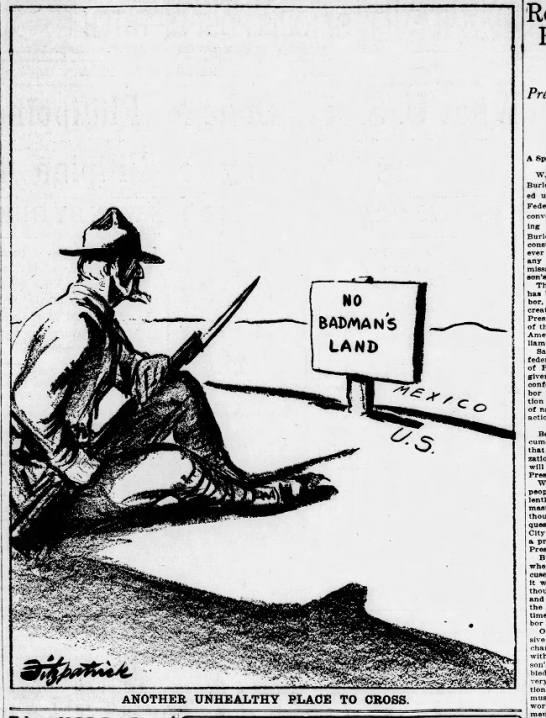
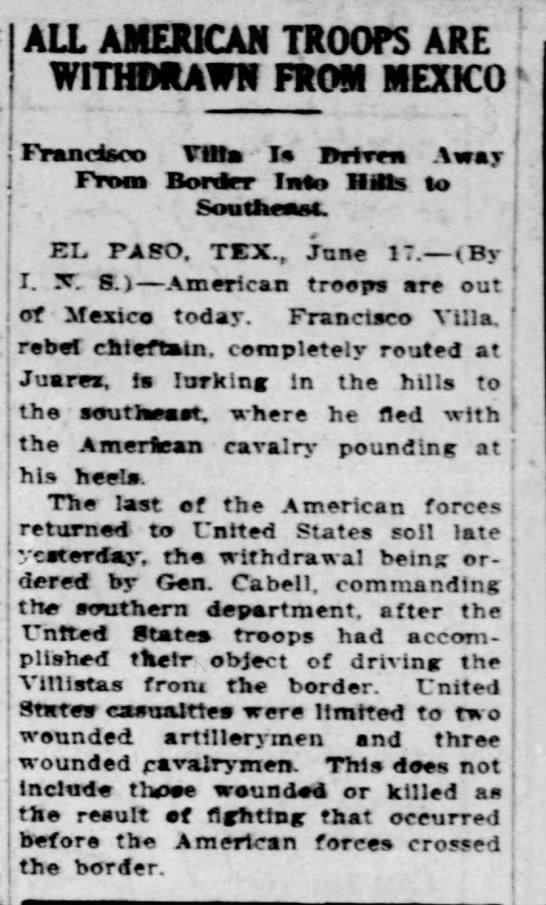
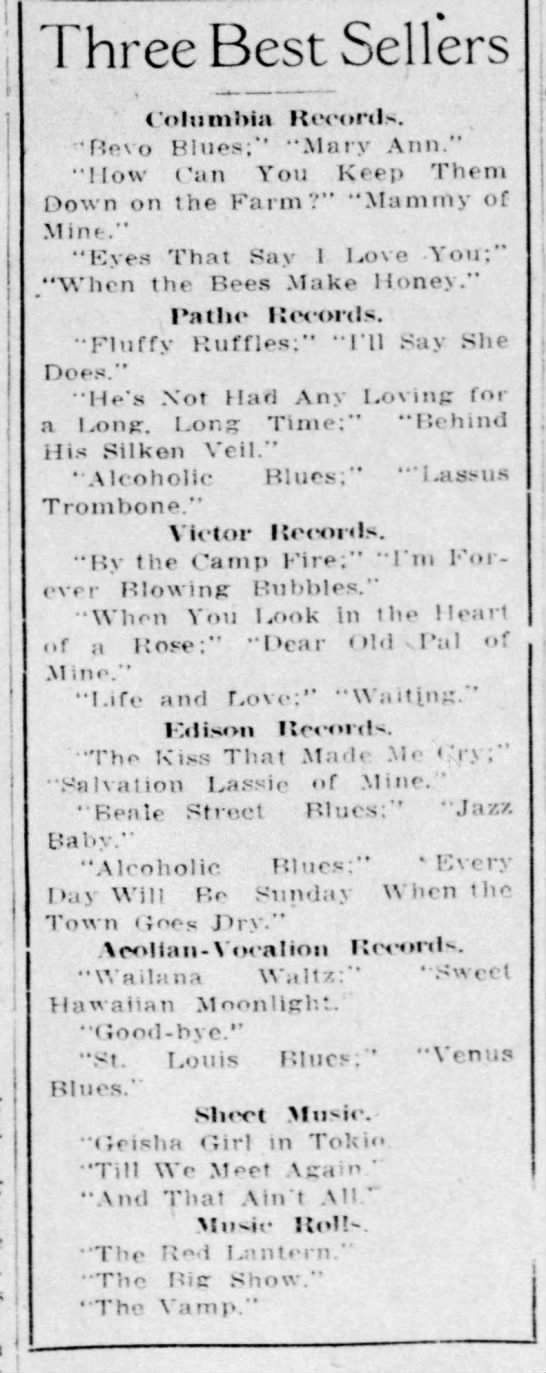 |
| June 21, 1919 from St. Louis Star |
Alcoholic Blues was a popular song by the Tin Pan Alley hit writer Albert Van Tilzer. I have the sheet music in my personal collection. Listen to Bill Murray sing it here.
The Alcoholic Blues
(Albert Von Tilzer / Edward Laska)
I love my country, 'deed I do
But oh, that war has made me blue
I like fightin', that's my name
But fightin' is the least about the fightin' game
When Mister Hoover said to cut my dinner down
I never even hesitate, I never frown
I cut my sugar, I cut my coal
But now they dug deep in my soul
I've got the blues, I've got the blues
I've got the alcoholic blues
No more beer, my heart to cheer
Goodbye whiskey, you used to make me frisky
So long highball, so long gin
Oh, tell me when you comin' back agin
Blues, I've got the blues
Since they amputated my booze
Lordy, Lordy, war is well
You know I don't have to tell
I've got the alcoholic blues
Some blues, I've got the blues
Prohibition that's the name
Prohibition drives me insane
I'm so thirsty, soon I'll die
I'm simply goin' to 'vaporate, I'm just that dry
I wouldn't mind to live forever in a trench
Just if my daily thirst they only let me quench
And not with Bevo or Ginger Ale
I want the real stuff by the pail
I've got the blues, I've got the blues
I've got the alcoholic blues
No more beer, my heart to cheer
Goodbye whiskey, you used to make me frisky
So long highball, so long gin
Oh, tell mw when you comin' back agin
Blues, I've got the blues
Since they amputated my booze
Lordy, Lordy, war is well
You know, I don't have to tell
I've got the alcoholic blues
Some blues, I've got the blues



































